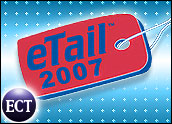
If you’re responsible for performance-driven online marketing — particularly for Web-based sales or lead generation — then your mission is to optimize a funnel.
The online marketing funnel is an upside-down pyramid, sort of like a great, big waffle cone. At the top, you start with everyone who is exposed to your banner ads, paid search keywords and e-mail marketing messages.
Some portion of those people click through, and thereby move one level deeper into your funnel.
At the very bottom of that funnel, some much smaller portion of those respondents pop out as “conversions” — as leads, subscribers or possibly even customers, depending on the nature of your business and its sales cycle.
What happens in the middle, between click and conversion is the realm of post-click marketing. Unfortunately, there is often a big gap here, where a number of respondents disappear without explanation.
The Law of Diminishing Returns
How big is this gap? As an industry average, only about 3 percent of the people who click into your funnel make it all the way down to conversion. Your mileage may vary, but odds are that your funnel is pretty darn narrow at the bottom, and you face constant pressure to increase the number of conversions flowing out of it.
One way to squeeze out more conversions, of course, is to increase your advertising spend, reaching for more and more people to pour in at the top of your funnel. After all, 3 percent of a larger number is a larger number itself, right?
However, online advertising can be expensive and is constrained by the law of diminishing returns — as you continue to increase your spend, the impact of each additional dollar eventually starts to decline.
If your funnel is responsible for generating qualified leads, casting an ever wider net can also take a toll on lead quality.
A better alternative is to concentrate on improving your conversion rate. This is what post-click marketing is all about: optimizing the middle of the funnel to convert more respondents. Doubling your conversion rate would give you as many net conversions as doubling your media spend — yet simultaneously increase your flow and decrease your cost per acquisition (CPA).
For many companies though, the middle of the funnel is somewhat of a mystery. Metrics at the top and bottom are clear — clicks and conversions — but what do you measure in between? What happens in that gap between 100 percent of the people who land and the 3 percent who convert? Who are those 97 percent and why did they slip away?
Landing Paths
Traditional Web analytics are interesting, but since they span everything people do on your site, in whatever order, they are usually too broad and ambiguous to answer these questions accurately — especially when you have to rapidly judge the performance of specific campaign initiatives.
A good solution is to install path-based “landing experiences” at the top of your funnel. More than a landing page but less than a full-blown Web site, landing paths are short sequences of two to five pages that provide a structured follow-up for each of your sources of clicks. Appropriately, these are also known as conversion paths.
From the respondent’s point of view, a landing path is good when it quickly matches them up with content and an offer that’s most relevant to their interests.
It might be a preface to deep linking into your main Web site, or it could be an entirely self-contained presentation. It makes and delivers on meaningful promises in short order, though.
If respondents receive a more focused and targeted post-click pitch, that will certainly increase your conversion rate. The big bonus of landing paths is that they establish a measurable structure that lets you “fill the gap” of the funnel before conversion.
Steps along a path can correspond with well-defined intermediate stages, with the performance at each stage giving you valuable insight into the effectiveness of previous stages — all the way back to the ad or e-mail from which the click originated.
Segmentation Rate
A best practice is to include a segmentation step early in the funnel, typically on the first page of your path.
Without requiring the respondent to fill out a form, you give them a choice of two or three branches in the path to determine which one best aligns with their reason for clicking in the first place. If you design these choices to correlate with your different target audiences, this step can provide precise behavioral segmentation.
Segmentation rate is then a useful pre-conversion metric, measuring the engagement and alignment of each group of respondents.
Since segmentation rate can be very high — over 50 percent — you also learn more about the people who don’t convert. This gives you powerful clues as to why they abandoned, so you can test and adjust your pre-click and post-click marketing accordingly.
Subsequent steps in your paths can feed into an “affirmation rate,” as respondents pass identifiable milestones on their way to conversion, further illuminating their behavioral profile.
You don’t want to go overboard, as the primary purpose of the path is to serve the best interests of the respondent, but two or three well-defined stages between click and conversion will make a world of difference in understanding the end-to-end dynamics of your funnel.
Increased visibility into the middle of the funnel makes it easier to manage because you know better what you’re optimizing. A more optimized funnel means more conversions, at higher quality, with a more effective media spend. It’s time to say goodbye to the gap.
Scott Brinker, president and CTO of Ion Interactive, directs the technology practice of its Boston office, focusing on the software and business processes that support a scientific approach to e-marketing.














































Exactly! Online businesses need to optimize the middle of their funnel and the web pages in between the "top and bottom". In-page Analytics tools are great for this, letting you watch recordings, get heat maps, drill down and segment your conversion funnels to find out what is happening at each page from homepage straight to checkout.